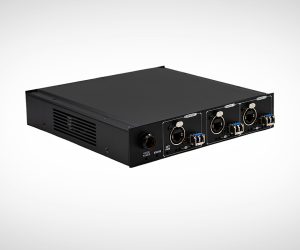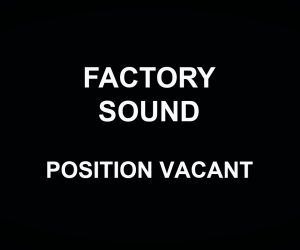
The Art of Sound
McClelland Sculpture Park+Gallery makes space for eco audio immersive sound art.
Text:/ Christopher Holder
Sound Art has been with us for a long time. Only now is the technology really catching up to make ambitious multichannel installations more readily achievable. Dante is a godsend. It’s now possible to run long cables without signal loss. Content can be remotely updated very easily. Comparatively, it’s all bit of a doddle.
But it remains difficult to gain traction. Public sound art is still rare as hen’s teeth.
I recall doing a story on an outdoor sound art installation at Melbourne’s Latrobe University back in 2014. It was fascinating and delightful.
Back then, Melbourne had five or more civic sound art installations. Now there’s one or two. But there’s reason to be optimistic.
The driving force behind the Latrobe Uni installation, Dr Lawrence Harvey, is still hard at it — continuing to spread the immersive sound art gospel. He also presides over a sound art course at RMIT, as part of the Design School. His mission is to raise the profile of sound and acoustic design in the built environment.
Thanks to Lawrence (and his colleagues Jon Buckingham and Suzanne Davies), RMIT has a solid international reputation as an institution that not only teaches about sound art and how to pull off a multichannel sound art installation but acts as a library for sound art Sonic Arts Collection — RMIT has commissioned and purchased a bunch of pieces.
“Dante has changed the landscape of these types of installations”

SCULPTURES, SITES & SOUNDS
The McClelland Sculpture Park+Gallery is an astonishingly well-appointed outdoor sculpture park in the Frankston district of Melbourne. There’s more to it, but the 120 or so outdoor sculptures have put the McClelland Sculpture Park+Gallery on the map. It’s largely privately funded and probably all the more interesting because of it.
Earlier in the year the gallery played host to SITE & SOUND, which drew heavily from RMIT’s Sonic Arts Collection. The centrepiece of Site & Sound was a dedicated immersive audio space. The collection of sound art dwelt on the theme of audio ecology — the sounds of our planet and how these sounds might inspire us to take better care of our environment.
Lawrence Harvey worked with his long-time co-conspirator John Buckingham, as well as the McClelland Sculpture Park+Gallery curator, Simon Lawrie on the collection.
Meanwhile, Simon Maisch, who’s RMIT’s in-house tech for SIAL Sound Studios (Spatial Information Architecture Laboratories) put the exhibition multichannel system together and ensured the pieces were expertly readied for the space.
“The space doesn’t adhere to a standard — it’s not Dolby Atmos, for example — it’s a bespoke 24-channel installation with some sculptural elements,” explains Simon Maisch. “The sound works were delivered often as eight- or 16-channel pieces which we would map to the speakers in the room depending on the intention of the artist.”
Site & Sound was sponsored by Yamaha Music Australia and the intention was for the installation to use Yamaha Commercial Installation Solutions loudspeakers and XMV-Series Dante-enabled amplifiers supplemented by RMIT’s collection of sometimes mismatched speakers from SIAL Sound Studios. The different sonic signatures, loudspeaker heights and the intentional use of different tunings actually enhances the sense of spatial depth. Unlike most other multichannel audio art works, you feel invited to walk in and through Site & Sound, and experience it… there’s no ‘sweetspot’ as such.
“Dante has changed the landscape of these types of installations,” observes Simon Maisch. “We use Reaper for the multichannel playback, and a PC running a Dante virtual soundcard. Then we run network cable to a number of Shure ANI4 Outs that each give us four analogue outputs, which feed the powered speakers or amps.”
DEMOCRATISED IMMERSIVE
Lawrence Harvey and Yamaha Music Australia share a passion for democratising multichannel audio. Lawrence’s professional life is devoted to educating and changing people’s minds about the creative use of audio in public spaces — creating multichannel sandboxes for sound artists to play in. Yamaha Australia has spent considerable time and energy demonstrating how immersive audio systems can be created using cost effective (Yamaha) DSP and matrixes, married to open source control software — you don’t need a hundred grand to play in the world of immersive audio.
Their partnership bodes well for sound art in this part of the world.
Yamaha Australia: www.au.yamaha.com
ABOUT SIAL SOUND STUDIOS
SIAL Sound Studios was officially opened in 2004 and is now part of the School of Design at RMIT University. The studios are devoted to sound-based research, teaching, performance and exhibitions. Students, staff, guests and partners include practitioners in acoustic design, sound performance, soundscape research and design. Projects in the studios encompass design, composition, acoustics, technology, performance and exhibitions. The studios also house Australia’s only speaker orchestra, which is regularly used for spatial sound performances and workshops.
SIAL Sound Studios: www.sial.rmit.edu.au















RESPONSES